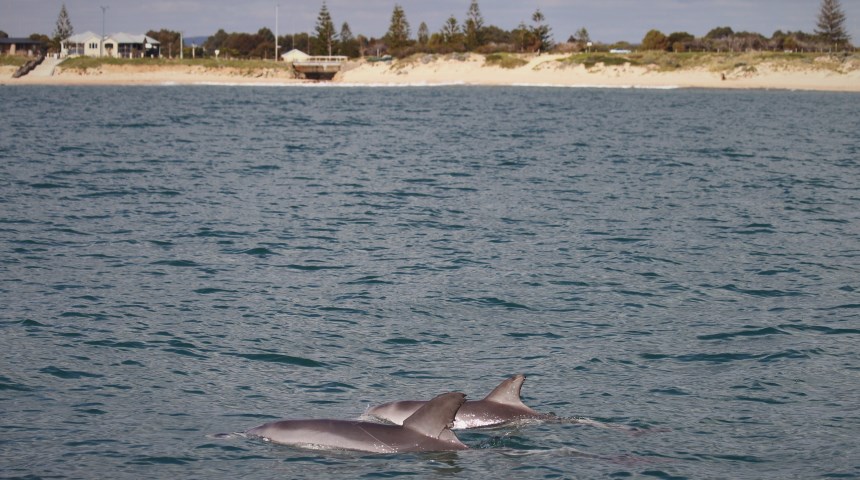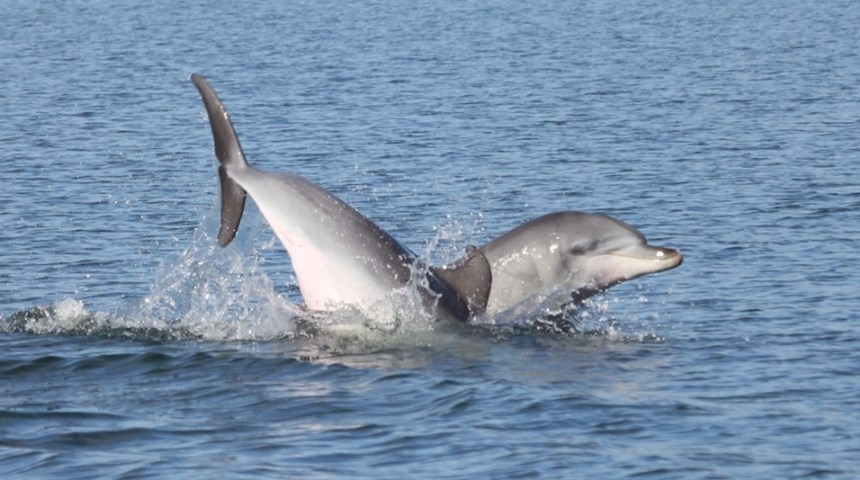
A new study into south-western Australian dolphin populations has found that Bunbury’s dolphins once played an important role in supporting neighbouring populations by providing migrants, however this could cease as their own numbers decline.
An international team of researchers, including Murdoch University Research Fellow, Dr Delphine Chabanne used DNA sampling of 193 Indo-Pacific bottlenose dolphins to investigate past genes flow in and out of the Bunbury population.
“The data revealed an overall dispersal of Bunbury’s dolphins to four neighbouring populations along the south-western Australian coastline occurred in the past,” Dr Chabanne said.
“Microsatellite data showed that more than twice as many individuals per generation left Bunbury to join neighbouring populations than came in, indicating that Bunbury has historically acted as a ‘source’ population.”
Lead author, Dr Oliver Manlik, Assistant Professor at the United Arab Emirates University and Conjoint Associate Lecturer at the University of New South Wales (UNSW), said that it was important for marine scientists to identify which wildlife populations were ‘sources’ from which individuals emigrated, and which were ‘sink’ populations that received the migrants.
“Dolphins have no borders, and persistence of animal populations often depends on a ‘rescue effect’ - a scenario in which a declining population can be saved from extinction by taking in immigrants from other populations,” he said.
Bunbury’s dolphin population is well known, but a recent study showed that the population may decline if the reproduction rates remain low.

“In combination with the prior finding that Bunbury may currently not produce surplus offspring to support itself or neighbouring populations, this potential reversal of ‘source’ vs ‘sink’ dynamics could have serious conservation implications for Bunbury and other populations nearby,” he said.
However, Dr Manlik said although the demographic modelling of the Bunbury population showed that reproduction is key to the persistence of dolphin populations, if undisturbed, the Bunbury dolphins could produce more offspring again in the future.
“In that case, the Bunbury population might be ok, and be able to support its neighbouring populations again,” he said.
Dr Chabanne said the survival of a dolphin population depended heavily on the rate of reproduction exceeding the rate of mortality.
“For the conservation of these dolphin populations, it is important to monitor them closely, and in particular, to keep a close eye on the reproduction of the Bunbury dolphins,” she said.
Co-author Professor Bill Sherwin from UNSW added: “Genes are information. They can tell us whether populations are isolated or connected, and shed light on migration patterns of the past — important information for wildlife conservation.”
The paper, published in the Marine Mammal Science journal today, demonstrates how genetic information can be used to give insights into the past migration patterns of animals.